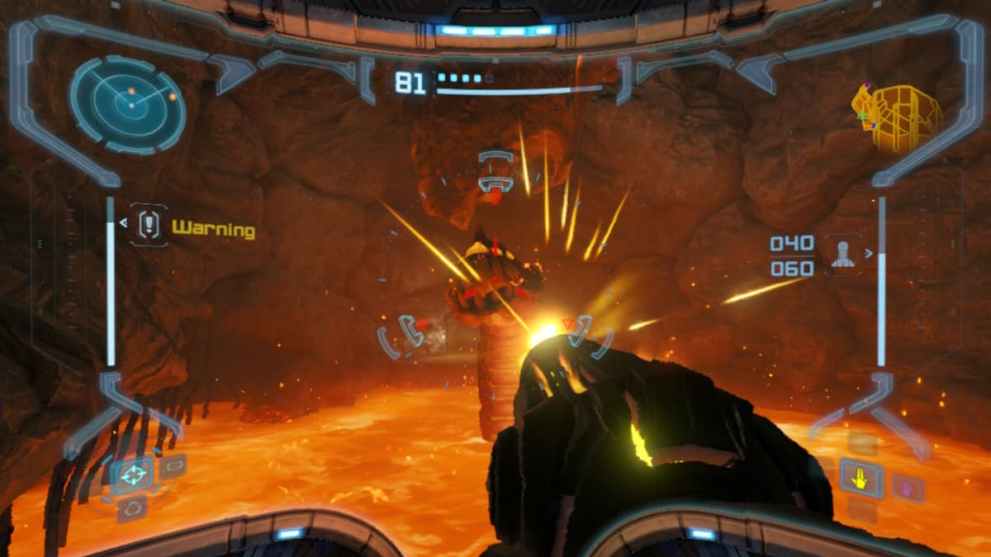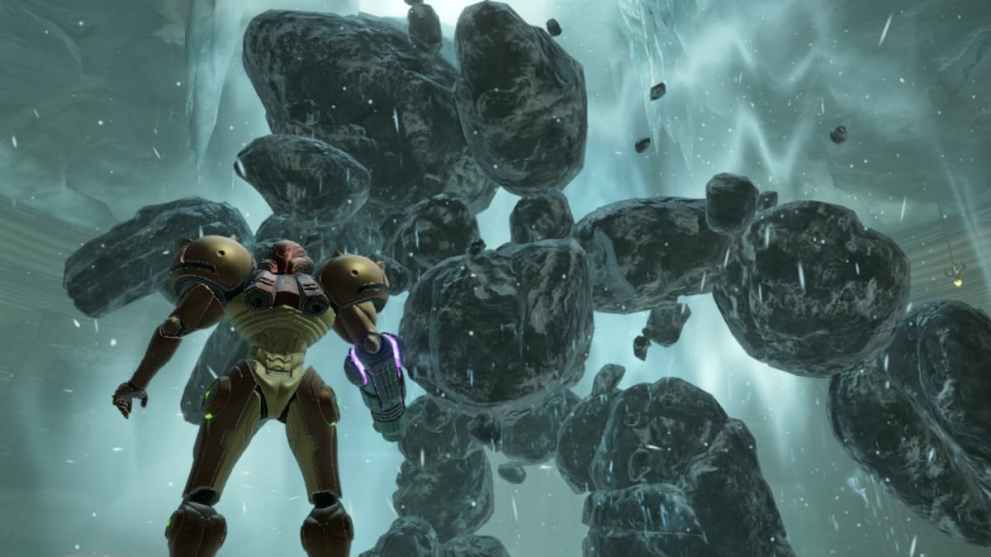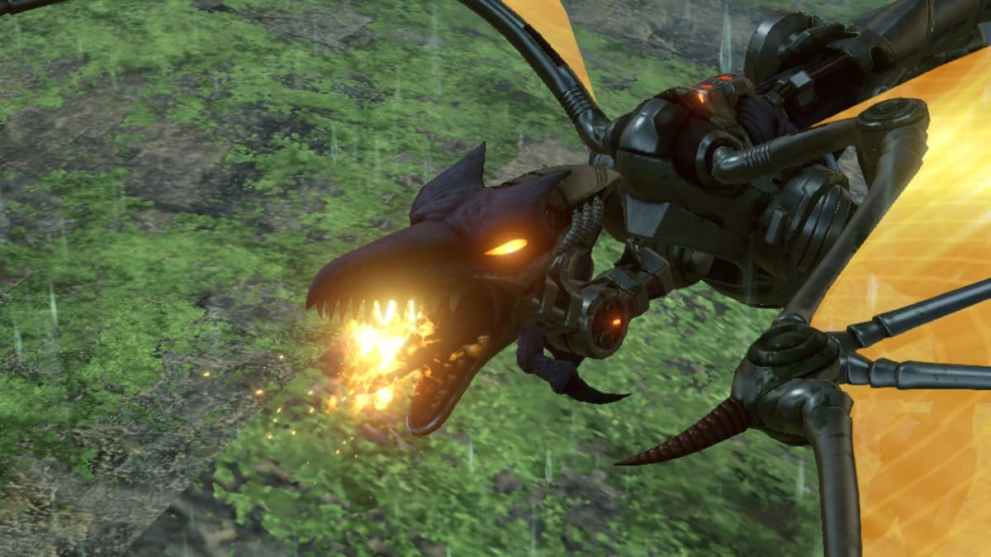Metroid Prime Remastered on Switch
After years of speculation about whether the Switch will get a 3D Metroid game in the form of the Prime trilogy, or Metroid Prime 4, Nintendo decided to announce and then immediately release a remaster of the original game by Retro Studios. Although it took a while to reach this point, the good news is that it was well worth the wait.
From the outset of Metroid Prime Remastered, it’s immediately obvious that this game is much more than your typical HD remaster. Immediately upon stepping foot on Talon IV as the bounty hunter Samus Aran, the gentle rain and lush green environment are just begging to be explored and appreciated.
Where many developers typically bump up the game’s resolution, Retro Studios updated the 20-year-old models, gave them new textures, and completely overhauled the lighting system to give this remaster a look that rivals some of the best-looking Switch games.
It’s fun to jump into the model viewer and fully appreciate how far this game has come since it originally launched on GameCube in 2002. Stylistically, the doors arguably don’t look as good as they did in the original version. Still, it’s something you’ll hardly notice when compared to the stunning-looking environments throughout Metroid Prime Remastered.

What’s even more impressive is how well the gameplay has carried over from the GameCube version of Metroid Prime. Like any Metroidvania game, there’s backtracking here and there to explore previously discovered areas with newly unlocked abilities. Fortunately, enemies in certain areas change throughout the game to keep things feeling new.
Additionally, the 13 to 15-hour-long adventure of Metroid Prime Remastered means that even with backtracking, the game never overstays its welcome. The story slows down a bit while hunting down Artifacts to reach the final battles, yet this section doesn’t last long enough to feel like it’s dragging.
Alternatively, players can spend as much time as they desire with this game by hunting down secrets and every single upgrade. If those aren’t enough, then there’s also a hard mode that can be unlocked by completing the game on Normal or Casual difficulties.
Plus, the high-action combat tasks players to stay engaged in the game with four different arm cannons to master and four visors to choose from as well. Testing out different combinations of visors and weapons to best take on specific enemies is almost like a minigame on its own.
On top of that, the incredibly satisfying platforming in Metroid Prime Remastered has also been carried over from the original title. Swinging over pits of magma and making death-defying jumps across the treetops feels as good as it ever has. Almost no FPS before Prime and very few since its launch in 2002 have had platforming this good. It’s admittedly simple with Space Jump (double jump) and the Grapple Beam being the most complex parts of the platforming. Still, the basics are done exceedingly well.

No matter if you’re into Metroid Prime Remastered for gunplay or platforming, there’s no bad control scheme in which to experience the game. Fans of the original will be happy to learn that the classic control style is still around and is even compatible with the GameCube controller via USB adapter. The Wii pointer controls are back along with the brand-new dual stick mode which is essentially the modern shooter button layout and hybrid mode which combines classic and motion controls.
While it seems like a small addition, having four distinct control options is massive, but not just for the sake of variety. The original control scheme gives fans of the original game a comfortable way to play, the pointer controls let Wii owners who missed out on the GameCube something familiar, dual stick allows FPS fans to easily slide into the game, and hybrid mode is there for the fans who enjoyed both Wii and GameCube Metroid games. Long story short, it lowers a barrier for entry that could have easily dissuaded people from playing the game had any one of these options wasn’t present.
The casual mode in Metroid Prime Remastered only continues to lessen the difficulty of entry for players who aren’t looking for a significant challenge. The Prime franchise isn’t known for being punishingly difficult. Still, the addition of a casual mode is a welcome one for people who are unsure about trying out the game because of its perceived difficulty. Plus, normal mode and hard mode are still there too which means there’s plenty of challenge to go around for those who want it.
Even if you’re planning on going through this game on the hardest difficulty, the best part about the story is that it can be enjoyed simply by reading the log entries at any time. Plus, these short world-building paragraphs can even help with difficult enemies and bosses by giving the player hints on what weapons they’re vulnerable to or which visor to use if they’re invisible in the standard view.

Even without the background information in the logs, it’s not too difficult to understand what’s going on in the story just based on the environment around you. Early in the game, there are multiple rooms with poison-filled water. The poisoned water gives the player clues to search out the source of the contamination which is a boss.
When defeated, the contaminants are removed from the water and it becomes easier to move through certain areas. As a result of this action, thick vines are able to grow in certain areas which end up blocking off other parts of the map. The game is filled with examples like this of using gameplay and the environment together to tell the story of Metroid Prime. It serves to make every single inch of the map feel alive.
Finally, what ties Metroid Prime Remastered together into one nice and neat package is the beautifully crafted soundtrack. The relentless driving theme of Magmoor Caverns, the delicate desolation of Phendrana Drifts, and the completely unsettling almost dissonant clanging of the Phazon Mines are just a few of the highlights from this stellar work.
Even the little jingles in the game are fantastically memorable. The sound that plays when a secret is discovered sparks a feeling of joy that’s only rivaled in gaming by the feeling when hearing the equivalent sound in a Zelda game. The short tune that plays when saving feels like taking a big breath of fresh air and gets you ready to jump back into the fray with renewed vigor (oh, and full health too).

As a whole, Metroid Prime Remastered is a reminder of Retro Studio’s masterful game-making abilities, but also how great a 3D Metroid game can be. The present and future are both very clearly bright for the Metroid franchise down at that little studio in Austin, TX. After years of stagnation, the Metroid Prime series now feels fresher than ever.
On top of that, Metroid Prime Remastered sets what should be the standard for remastered games going forward. This title is arguably the best-looking game on the Switch and captures the magic of the original all over again. Metroid Prime Remastered reminded the world why people consider this one of the greatest games ever made.
